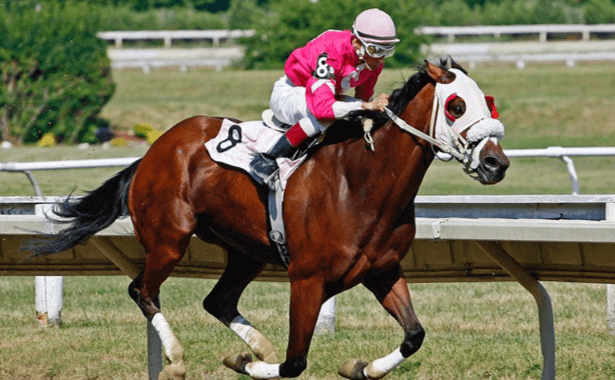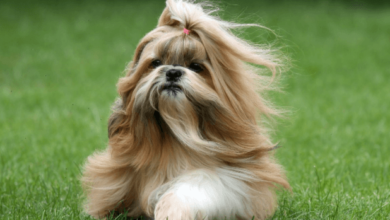What specific training routines do you follow to prepare a horse for a race?

Introduction
Training a horse for a race is a complex and detailed process that requires a deep understanding of the horse’s physical and mental needs. From initial conditioning to race day preparations, every step is critical in ensuring the horse is in peak condition. This article outlines the specific training routines that professional trainers follow to prepare a horse for a race.
Understanding the Basics of Horse Training
The training journey begins with a comprehensive veterinary assessment to ensure the horse is healthy and fit for training. Once cleared, the conditioning phase begins, focusing on building a solid fitness foundation. This involves light workouts such as walking, trotting, and cantering to develop the horse’s cardiovascular system and muscle tone gradually.
Each horse has unique needs based on factors such as breed, age, and physical condition. Customized training plans are essential to address these specific requirements, ensuring the horse receives the most effective training.
Building Strength and Endurance
Hill work involves trotting or galloping up inclines to build muscle and cardiovascular strength. This type of training enhances the horse’s overall power and stamina, which are crucial for racing.
Interval training alternates between high-speed sprints and slower paces. This method improves the horse’s stamina and recovery times, preparing it for the varied pace of a race.
Long Distance Runs
Gradually increasing the distance of runs helps improve the horse’s endurance. This training ensures that the horse can sustain high performance over the length of the race.
Speed Workouts and Sprinting Drills
Breeze work consists of short, fast gallops designed to boost the horse’s speed and agility. These workouts are essential for developing the explosive speed needed during a race.
Gate training familiarizes the horse with the starting gate, ensuring a calm and efficient start on race day. This training reduces the risk of false starts and anxiety.
Pace training teaches the horse to maintain a consistent speed over various distances. This skill is critical for managing energy and stamina throughout the race.
A balanced diet is vital for a racehorse’s performance. High-quality hay, grains, and specific supplements provide the necessary nutrients. The diet is adjusted based on the horse’s workload, weight, and health needs to ensure optimal performance.
Monitoring and Adjusting Workouts
Constant monitoring of the horse’s health and performance is crucial. Trainers use heart rate monitors, GPS trackers, and regular veterinary check-ups to assess the horse’s condition. Based on these assessments, workouts are adjusted to prevent overtraining and injuries.
Mental Conditioning and Routine
Maintaining a consistent training schedule helps build the horse’s confidence and reduce anxiety. Routine workouts create a sense of familiarity and stability, which is essential for mental conditioning.
Using rewards to encourage desirable behaviors is a key part of training. Positive reinforcement helps the horse associate training with positive experiences, making it more willing to perform.
Familiarizing the horse with the noise, crowds, and excitement of race day helps prevent sensory overload. This exposure ensures the horse remains calm and focused during the actual race.
Rest and Recovery
After workouts, walking the horse helps reduce muscle stiffness and aids recovery. Cool down periods are essential to prevent injuries and ensure the horse remains in good condition.
Incorporating rest days into the training schedule allows the horse’s muscles to recover. Adequate rest is crucial for maintaining peak performance and preventing burnout.
Massages, hydrotherapy, and other treatments help the horse recover from intense workouts. These therapies reduce muscle soreness and enhance overall well-being.
In the days leading up to the race, the intensity of workouts is reduced to keep the horse fresh. Light workouts maintain fitness without causing fatigue.
A thorough veterinary check ensures the horse is in optimal health before the race. Any last-minute issues are addressed to ensure the horse is race-ready.
Keeping the horse calm and focused is essential in the days before the race. Routine activities and familiar environments help reduce pre-race anxiety.
Race Day Routine
A light warm-up on race day helps prepare the horse’s muscles. This routine ensures the horse is ready for peak performance without risking injury.
Providing a balanced meal on race day fuels the horse without causing discomfort. Proper nutrition ensures the horse has the energy needed for the race.
Keeping the horse relaxed and focused is crucial. Minimizing distractions and maintaining a calm environment helps the horse stay mentally prepared.
Post-Race Care
Walking the horse after the race helps reduce muscle stiffness and aids recovery. Cool down periods are essential for preventing injuries.
Ensuring the horse is well-hydrated after the race is crucial for recovery. Proper hydration prevents dehydration and helps the horse recover more quickly.
Regular monitoring for any signs of injuries or fatigue is essential after the race. Early detection of issues ensures prompt treatment and recovery.
FAQs
What age is ideal to start training a racehorse?
- Typically, training begins at 2 years old, but this can vary based on the horse’s development and breed.
How important is nutrition in a horse’s training routine?
- Nutrition is crucial as it provides the necessary energy and nutrients for peak performance and recovery.
What equipment is used in horse training?
- Equipment includes saddles, bridles, heart rate monitors, GPS trackers, and therapeutic tools like massage devices and hydrotherapy units.
How long does it take to train a racehorse?
- Training duration varies but generally takes several months to a year, depending on the horse’s initial fitness and goals.
Can all horses be trained for racing?
- Not all horses have the physical attributes or temperament for racing. A thorough assessment determines a horse’s suitability.
What are common injuries in racehorses and how are they prevented?
- Common injuries include tendonitis, fractures, and ligament sprains. Prevention involves proper training, adequate rest, and regular veterinary care.
Conclusion
Training a horse for a race is a comprehensive and meticulous process that requires balancing physical workouts, mental conditioning, and nutritional management. Each horse’s training routine is unique, tailored to harness its strengths and address its weaknesses. By following these specific routines, trainers can ensure their horses are race-ready, performing at their best, and primed for success.





